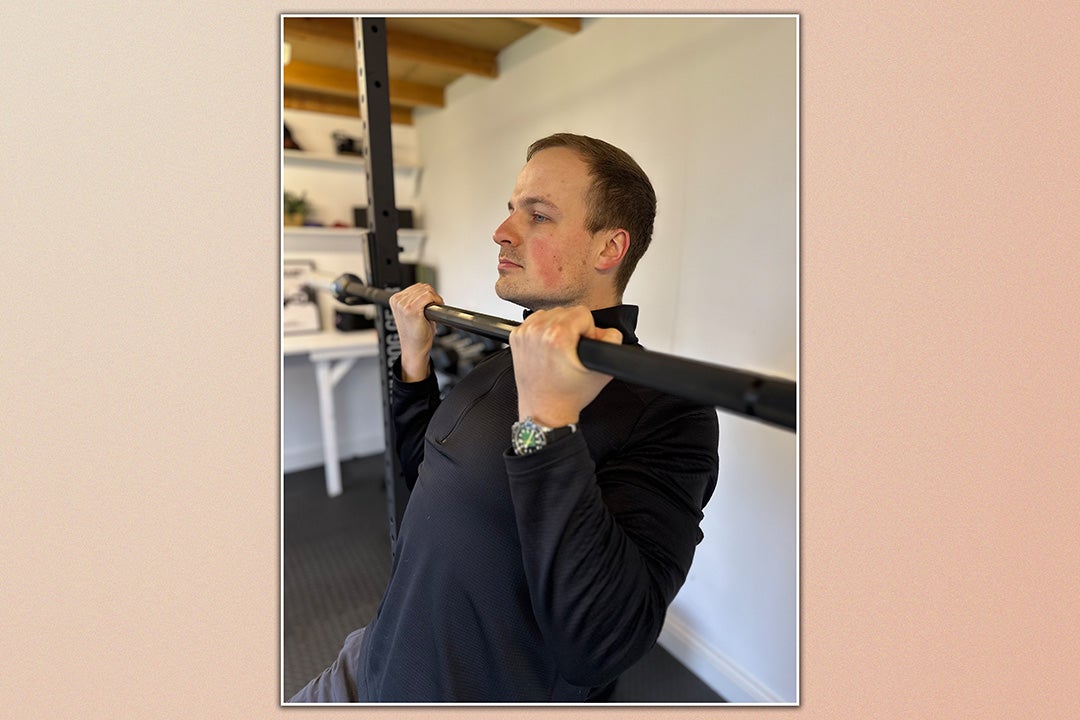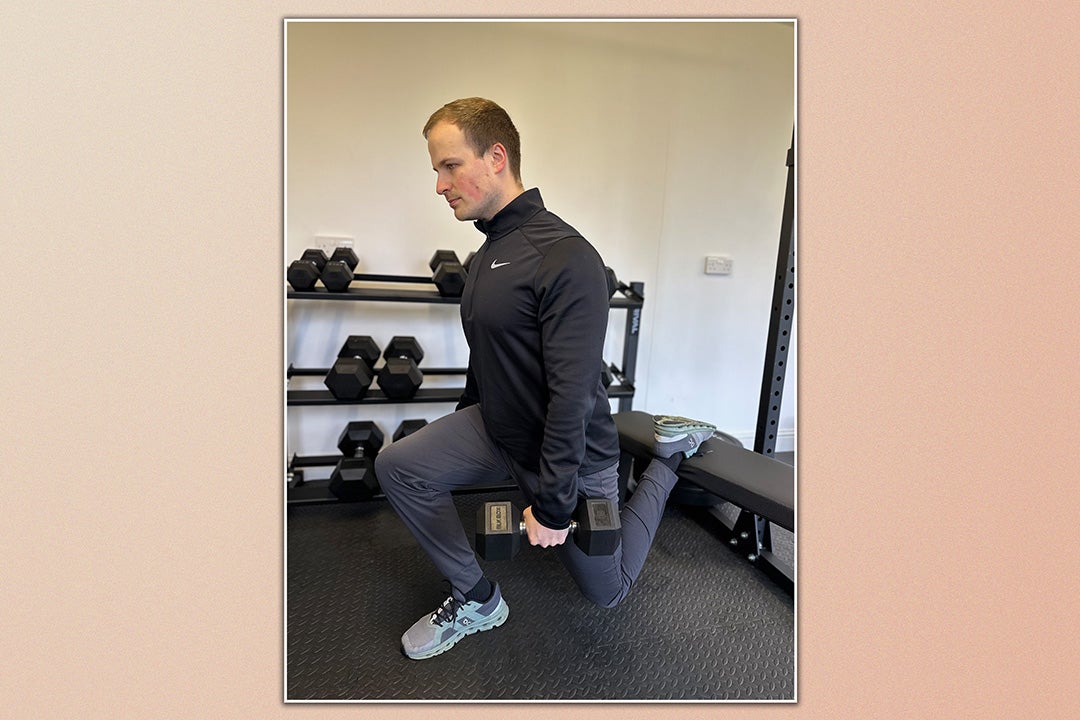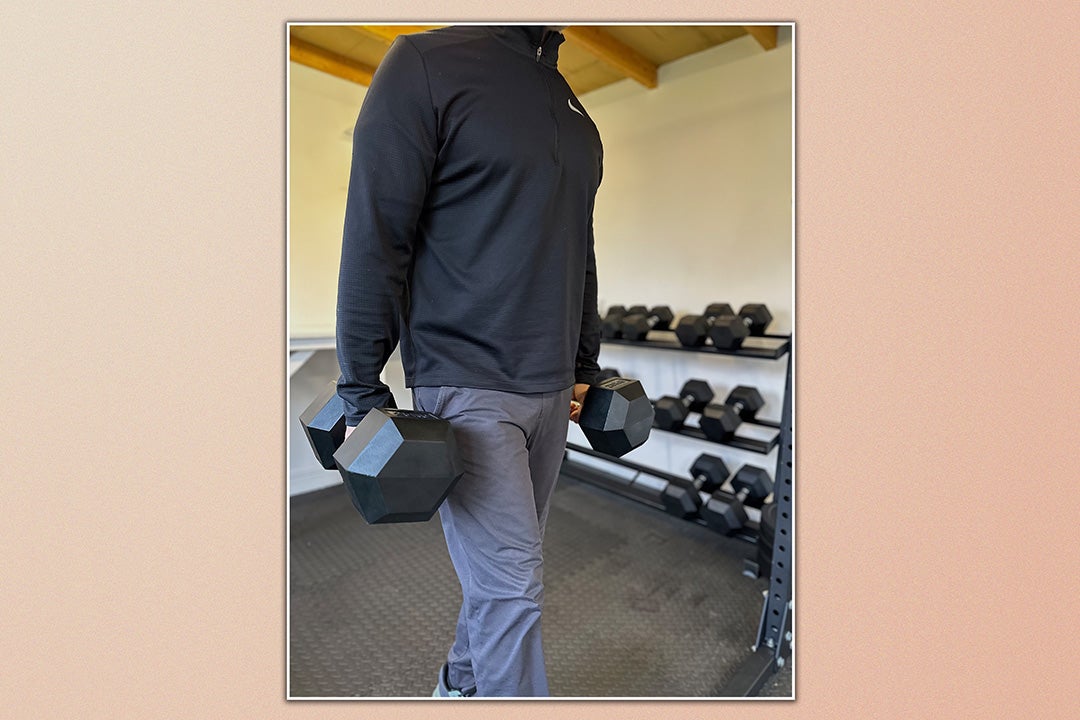Your support helps us to tell the story
From reproductive rights to climate change to Big Tech, The Independent is on the ground when the story is developing. Whether it’s investigating the financials of Elon Musk’s pro-Trump PAC or producing our latest documentary, ‘The A Word’, which shines a light on the American women fighting for reproductive rights, we know how important it is to parse out the facts from the messaging.
At such a critical moment in US history, we need reporters on the ground. Your donation allows us to keep sending journalists to speak to both sides of the story.
The Independent is trusted by Americans across the entire political spectrum. And unlike many other quality news outlets, we choose not to lock Americans out of our reporting and analysis with paywalls. We believe quality journalism should be available to everyone, paid for by those who can afford it.
Your support makes all the difference.
If you want to live better for longer, growing stronger should be on your to-do list, according to a top trainer. This is because strength training can help us “stay vibrant, physically independent and disease-free in our final decades”, says Ollie Thompson, personal trainer and founder of Welltolead, a performance-focused health coaching company.
“In my opinion, the benefits of maintaining healthy muscle are highly underrated,” he says. “Resistance training is crucial for long-term health – not just from a movement perspective, staying physically strong and mobile, but also for maintaining overall physiological health.
“Consistent resistance training enhances metabolic function by improving insulin sensitivity, supports cardiovascular health by reducing blood pressure and inflammation, helps maintain hormonal balance to combat age-related declines, preserves bone density to reduce fracture risk, and strengthens the immune system to help fight off disease.”
In order to help you build strength, Thompson has shared three gym exercises he believes hold the most value if training for longevity is your goal:
- Assisted chin-up
- Bulgarian split squat
- Farmer’s carry
“Based on my experience, if we define longevity as living better for longer – with an emphasis on staying vibrant, physically independent and disease-free in our final decades – then these are the top three gym exercises for longevity,” says Thompson.
When combined, they can strengthen muscles across your upper and lower body, boosting joint health, developing balance and coordination, and improving your posture, among other perks.
Read more: This one-move workout from Anne Hathaway’s trainer builds core stability in just three minutes
How to do an assisted chin-up

- Place a barbell in a rack at roughly chest height.
- Sit on the ground under the barbell then reach overhead and grasp it with an underhand grip, hands roughly shoulder-width apart.
- Keeping your feet on the floor for support, pull your body upwards until your chin is above the bar. Think about squeezing your shoulder blades together as you do this.
- Slowly control yourself back to the starting position.
- Over time, try to provide less support with your feet to make the exercise more challenging, in line with your increasing strength levels. You can also use an assisted pull-up machine or resistance band to perform this exercise.
Benefits of the assisted chin-up
The chin-up has a somewhat intimidating reputation. But by using a machine, resistance band or even a lower pull-up bar and supporting yourself with your feet, Thompson says it can be scaled to suit most fitness levels. And adding it to your regular routine unlocks plenty of benefits.
The chin-up not only recruits multiple muscles across your back, biceps, forearms and core, but it’s also one of the best things you can do to develop a healthy set of shoulders.
“One key reason I picked the assisted chin-up is that performing a full repetition – from a dead hang to the top with your chin at the bar – takes your shoulder blades through a full range of motion,” says Thompson.
“In the bottom hanging position, with your hands supinated [palms towards you], you create external rotation at the shoulder joint while under load with your arms overhead – an excellent way to maintain strong, stable and well-functioning shoulders.
“Moreover, this exercise can’t be beaten for training grip strength, which studies have strongly correlated with healthier muscle mass and better longevity.”
Read more: Stanley Tucci got into the ‘best shape of his life’ at 63 with this training method
How to do the Bulgarian split squat

- Stand one step in front of a bench or sturdy surface that’s around knee height. Face away from this surface.
- Hold a dumbbell or kettlebell in your left hand with your arm by your side, palm facing your body.
- Keeping your right leg long and your hips square, place the top of your left foot on the bench behind you.
- Lower your left knee until it’s just above the ground, keeping your chest up as you do this, then drive through your right foot to return to the starting position.
Benefits of the Bulgarian split squat
The chin-up promises to strengthen multiple muscles across your upper body, and the Bulgarian split squat mirrors this for your lower half.
“As a unilateral [single-limb] exercise, it’s excellent for building strength and stability at the hip, knee and foot, helping to correct severe muscular imbalances while also incorporating a balance component,” says Thompson.
“It also challenges kinaesthetic awareness – your ability to sense your position and movement in space – which is a crucial skill for preventing trips and falls in later life.”
These are some impressive longevity credentials, and the Bulgarian split squat has another trick up its sleeve that elevates it above standard squats, in Thompson’s eyes.
“I’m a huge fan of this exercise because, when performed correctly, it not only engages every major muscle in the leg but also forces you into hip extension,” he says.
“This position, where the leg moves behind the hip and midline, tends to weaken significantly with age. Developing strength and mobility in this range plays a key role in maintaining movement quality and walking mechanics, and it can also be instrumental in reducing back pain, hip pain and dysfunction in these areas.”
Read more: Walking 10,000 steps a day might not matter if you don’t do this one thing, according to an expert
How to do the farmer’s carry

- Hold a dumbbell or kettlebell in each hand with your arms by your side and your palms facing inwards.
- Maintaining an upright torso and tight core, walk with the weights.
Benefits of the farmer’s carry
The farmer’s carry is a refreshingly straightforward exercise: simply pick up a couple of dumbbells or kettlebells and take them for a walk. This simplicity means it’s overlooked, but Thompson says those who omit it are missing out.
“The farmer’s carry is an exercise I don’t see performed nearly as often as it should be. Here’s why: it’s a full-body movement that involves ambulation, it tests your grip strength and it’s fantastic for improving posture.
“It builds strong joints, enhances hip stability, challenges your balance, coordination and kinaesthetic awareness, and ultimately provides a brilliant way to build strength while also taxing your aerobic system.”
In other words, it will bolster your heart and lung health by having you breathing heavily, while also strengthening your entire body. The farmer’s carry is a viable option for the vast majority of people too.
“I often prescribe farmer’s carries to my online clients because they are incredibly accessible and can be scaled easily, with progress easily tracked. Simply pick a challenging kettlebell or dumbbell, then walk for time, distance, steps or breaths. This way, you can keep track of how your performance improves over time.”
Other things to consider when training for longevity
Resistance training is Thompson’s top recommendation when exercising for longevity. But he says cardiovascular exercise – activities that raise your heart rate for a sustained period – should also be among your top priorities.
“Cardiovascular exercise is, of course, essential for heart health, but it also plays a critical role in mitochondrial function, reducing the risk of major diseases and cancers, supporting brain health, enhancing energy production, improving sleep quality and managing stress,” he explains.
“As well as resistance training, a well-rounded approach to exercising for longevity includes both low-intensity zone two cardio [performed at roughly 60-70 per cent of your maximum heart rate] and short bouts of high-intensity training. This combination builds both a wide aerobic base and a high aerobic peak – known as VO2 max – which is strongly associated with better health, longevity, and reduced all-cause mortality.”
Read more: I went on my first wellness retreat, and it wasn’t what I expected at all
This article was originally published by a www.independent.co.uk . Read the Original article here. .

